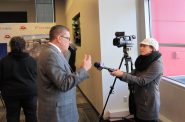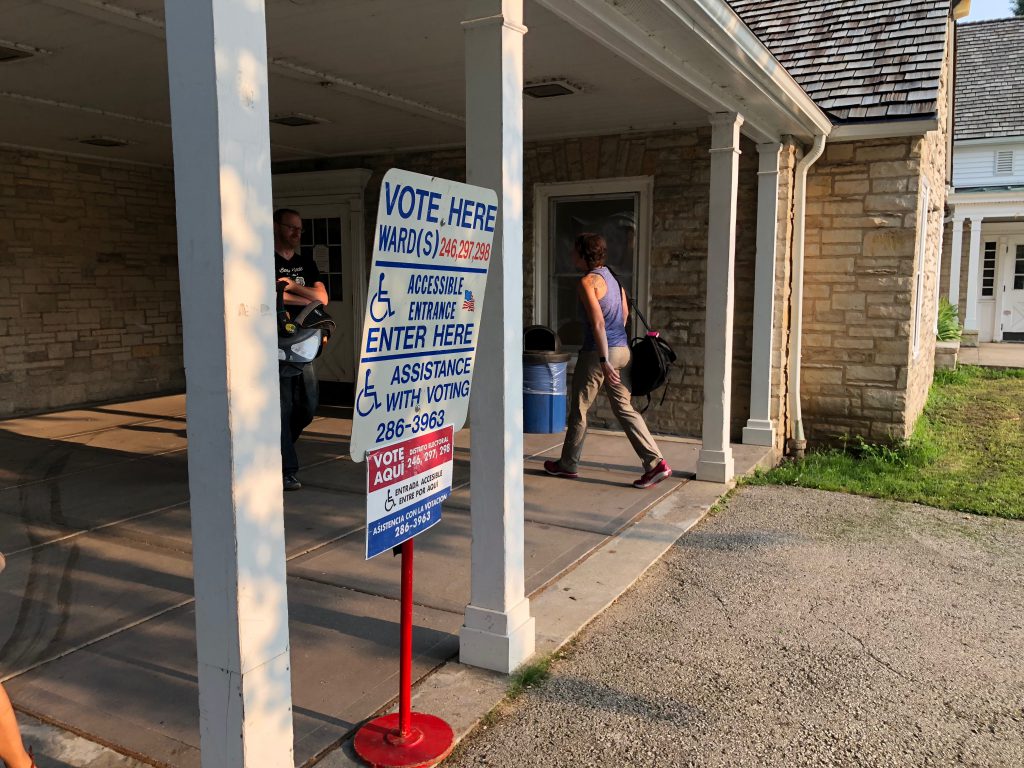Young Voters Could Decide Election
Vote by 18- to-29 year-olds surging in some states. What about Wisconsin?
All signs suggest this will be a high-turnout election. The big surprise is this appears to include a higher turnout of younger voters, aged 18-29, which could make this a mid-term election unlike any seen in the last three decades.
The early voting totals for young adults are up by 125 percent compared to the last mid-term election in 2014, “according to Catalist, a voter database servicing progressive organizations — an eye-popping and historically high figure, say strategists on both the left and the right,” the Washington Post reports.
The Data firm TargetSmart has analyzed the numbers in a list of states, and found that early and absentee voting by people under 30 has increased by more than 400 percent in Texas, Georgia and Pennsylvania, by 217 percent in Arizona, and by 131 percent in Florida, compared to the vote in 2014. And “early youth voting in Illinois is up 144 percent over the 2014 midterms,” USA Today reports.
That is very good news for Democrats because polls regularly show younger voters are much less likely to vote for Republicans.
But two different polling groups have found something remarkable happening this year: a big jump in the percent of young people saying they intend to vote. In late October the Institute of Politics at Harvard Kennedy School released the results of its biannual survey of 18-to-29-year olds, and found that 40 percent said they will “definitely vote” in the midterms.
But how many will actually turn out? John Della Volpe, polling director at the Harvard Institute, told Reuters that in past surveys the actual turnout of young voters has typically trailed the polling data by the high-single digits. By that standard at least 31 percent of 18-to-29-year-olds would show up to vote, which would be off the charts compared to mid-term elections in the last three decades.
In its press release of the survey, the Institute quoted Teddy Landis, a junior at Harvard College and student chair of the Harvard Public Opinion Project, who said this: “Whether I’m on Snapchat, Instagram, or in the dining hall, you can feel the energy ahead of this election…This feels like a special moment where young people are convinced that voting matters.”
Just a couple weeks earlier, a poll of 18-to-24-year-olds conducted in September by the Center for Information and Research on Civic Learning and Engagement at Tufts University identified a similar trend, with 34 percent saying they were “extremely” likely to vote in November. That was nearly as many as said they would vote in the presidential election of 2016. “The 2018 midterms have the potential to be historic for youth political participation,” the center’s press release declared.
If that’s happening in Wisconsin, it isn’t because the Democratic Party is prioritizing the youth vote. As one Democratic consultant tells me, the party’s main push is on turning out those who’ve voted in prior mid-terms and that’s not young adults. “The group of people who is least likely to vote is not where the emphasis is,” the consultant says.
Another veteran Democratic insider, an aging baby boomer, scoffs at the idea of a big youth turnout. “I’m not optimistic,” he says. “If they could all vote online or on their phones, the vote would be off the charts.”
And the party’s candidate for governor, Tony Evers, a white-haired moderate liberal, isn’t necessarily the kind of candidate who would attract younger voters. On the other hand, incumbent Tammy Baldwin, the first openly gay person ever elected to the U.S. Senate, and a backer of Bernie Sanders‘ “Medicare For All” proposal, should have appeal for Millennials.
As one national analyst observes: “Certain candidates are proving especially adept at attracting younger voters, including Andrew Gillum in Florida, Alexandria Ocasio-Cortez in New York, and Beto O’Rourke in Texas.”
Younger voters in this state may also be attracted to the polls by the marijuana issue: Sixteen counties and two cities in Wisconsin have advisory referendums on their ballot to legalize either medical or recreational pot. One survey of state residents found that “Fifty-six percent of respondents said they would be more likely to vote if their ballot had a marijuana question,” and that boost in enthusiasm was “particularly sizable” for Democrats and young college grads.
In addition, a group called Leaders Igniting Transformation has targeted young voters of color and is organizing in Wisconsin to turn out the vote. Dakota Hall, its local spokesperson, says the group has registered “hundreds of voters on each college campus in the state.”
For the first time Milwaukee has early voting sites at UW-Milwaukee, where 2,633 had voted by November 4, and at MATC, which had 1,213 early voters. This is part of the city’s expansion of early voting sites, from two to eight, resulting in a tremendous increase in early voting. City Election Commission figures show that Milwaukee has had 36,650 early voters, nearly seven times more than in the 2014 election, which had just 5,355 early voters.
In the college town of Madison, according to its City Clerk, there were 37,314 early voters, more than four times higher than in 2014, when there were 8,811 early voters.
At the very least such numbers suggest high enthusiasm in the state’s two biggest voting areas for Democrats. But if it also signals a historically high turnout of young voters, this could indeed be a blue wave election.
If you think stories like this are important, become a member of Urban Milwaukee and help support real independent journalism. Plus you get some cool added benefits, all detailed here.
Murphy's Law
-
The Last Paycheck of Don Smiley
 Dec 17th, 2025 by Bruce Murphy
Dec 17th, 2025 by Bruce Murphy
-
Top Health Care Exec Paid $25.7 Million
 Dec 16th, 2025 by Bruce Murphy
Dec 16th, 2025 by Bruce Murphy
-
Milwaukee Mayor’s Power in Decline?
 Dec 10th, 2025 by Bruce Murphy
Dec 10th, 2025 by Bruce Murphy






















